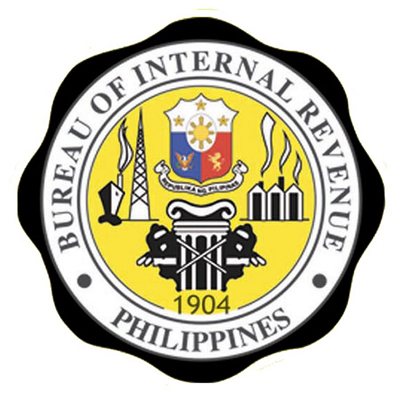The Bureau of Internal Revenue (BIR) issued this month of February the Revenue Regulations No. 2-2014 (RR 2-2014) prescribing the New Income Tax Forms that will be used in filing of Income Tax Returns (ITRs) for the taxable year ending December 31, 2013.
What are the Changes?
The new income tax forms have the following changes:
- The revised income tax forms will reflect changes in the information required to be presented.
- The revised income tax forms will now have bar codes that will enable the bureau to scan and have it read by an optical character reader (OCR)
- The revised income tax forms are required to be printed in an A4 size bond paper.
- The revised income tax forms will increase the number of income tax forms from three (3) to five (5). These new forms will be required to be submitted for income tax returns on taxable year ended December 31, 2013.
- BIR Form No. 1700 Annual Income Tax Return for Individuals Earning Purely Compensation Income
- BIR Form No. 1701 version June 2013 (Annual Income Tax Return for Self-Employed Individuals, Estates and Trusts)
- BIR Form No. 1702-RT version June 2013 (Annual Income Tax Return for Corporations, Partnerships and Other Non-Individual Taxpayers Subject Only to the REGULAR Income Tax Rate)
- BIR Form No. 1702-EX version June 2013 (Annual Income Tax Return for Use Only by Corporations, Partnerships and Other Non-Individual Taxpayers EXEMPT Under the Tax Code, as amended, [Sec. 30 and those exempted in Sec. 27(C)] and Other Special Laws, with NO Other Taxable Income)
- BIR Form No. 1702-MX version June 2013 (Annual Income Tax Return for Corporations, Partnerships and Other Non-Individuals with Mixed Income Subject to Multiple Income Tax Rates or with Income Subject to Special/Preferential Rate)
- The revised income tax forms eliminate entering centavos in the income tax return. If the amount of centavos is 49 or less, drop down the centavos. If the amount is 50 centavos or more, round up to the nearest peso.
- The revised income tax form requires the following to itemized deductions, thus are not entitled to avail of the Optional Standard Deduction (OSD):
- Corporation, partnerships and other non-individuals who are:
- Exempt under the tax code and other special laws, with no other taxable income
- With income subject to special/preferential tax rates
- With income subject to income tax under Section 27(A) and 28 (A)(1) of the tx code, and also with income subject to special/preferential tax rates
- Juridical entities whose taxable base is the gross revenue or receipts (e.g., non-resident foreign international carriers) are not entitled to the itemized deductions nor to the optional standard deduction (OSD) under Section 34(L) of the Tax Code, as amended.
- Individual taxpayers
- Exempt under the Tax Code, as amended, and other special laws with no other taxable income [e.g. Barangay Micro Business Enterprise (BMBE)
- Those with income subject to special/preferential tax rates
- Those with income subject to income tax rate under Section 24 of the Tax Code, as amended, and also with income subject to special/preferential tax rates.
- Corporation, partnerships and other non-individuals who are:
- The taxpayers who filed using old forms for their 2013 ITRs (manual and/or electronic) must re-file using the new income tax forms upon their availability.

Hi Mam
Greetings.
May I ask po if I have two (2) employers, yung P 30,000 cap na tax exemption on 13th month and bonus, can I avail it to both company? P 30,000 each for the two (2) company for a total of P 60,000.
For example base on the form 2316 provided by company A: Total bonus and 13th mo is P 43,000 less P 30,000 equals P 13,000 is the additional taxable income.
In company B: Total 13th mo is only P 3,000.00.
Does the P 3,000 13th mo pay I receive from company B included in additional taxable income or exempted because I can still avail the P 30,000 cap exemption?
Thank you po Mam.
God bless po.
Great day! I have this question. If an individual who is engaged in business opted to avail of the optional standard deduction and will file his annual tax return, is the personal and additional exemptions still deductible from the net income after the 40% optional deduction from gross receipts/sales. Thank you!
Hi! I’d like to ask about the “mandatory itemized deduction.” I’m a newly registered self-employed individual and it will be my first time to file BIR Form 1701 this April. I’ve filed my 2013 Quarterly using OSD. I have no other source of income other than practicing my profession . I’m not familiar with the special/preferential rates as I’ve never used it. Am I still allowed to use OSD for my annual ITR this April? Looking forward to your kind response. Thank you!
I am in the rental business. I had no tenants for the first 6 months of the year yet I continue to incur expenses such as depreciation, condo dues, etc. I filed my 1701Q for my 1st and 2nd quarters such that the taxable income is negative (i.e. net losses). This July, I had a tenant come in for a lease contract of 6 months till the end of this year. May I know if I can reduce my taxable income for this quarter by the ‘deficits’ I accumulated for the 1st and 2nd quarters? The new BIR eforms do not allow entry of negative amounts under line item 35A “Taxable income from previous quarter(s)”. How are the amounts to be shown on the 1701Q if these are allowed?
Thank you.